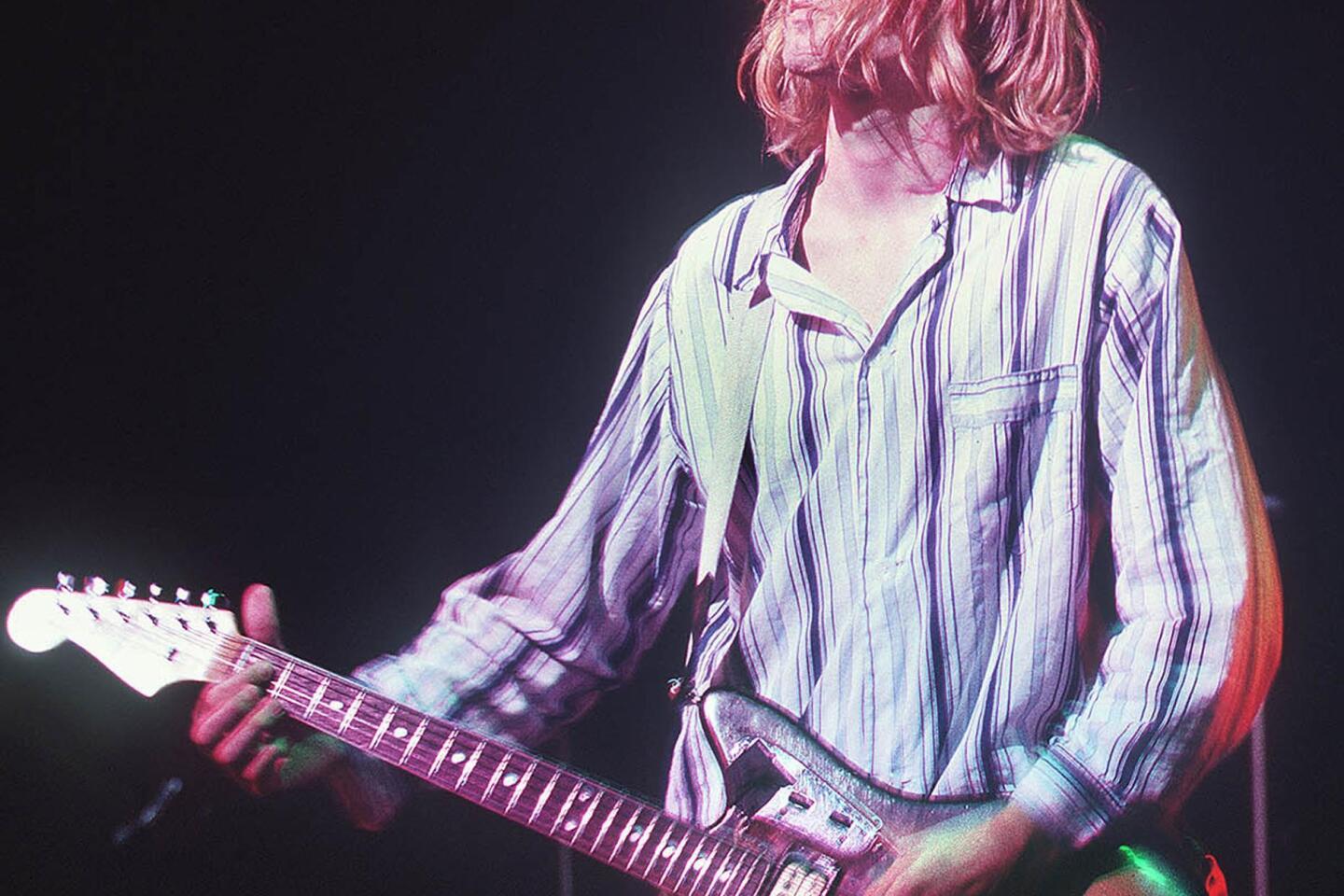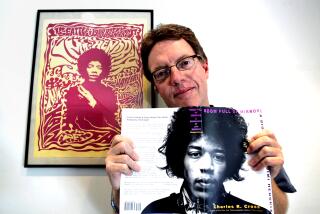Kurt Cobain: Seattle police release new photos of suicide scene
- Share via
SEATTLE — Seattle police on Thursday released previously unseen images showing drug paraphernalia from the scene of Nirvana frontman Kurt Cobain’s suicide 20 years ago.
Police spokeswoman Renee Witt said that a detective who recently reviewed the Cobain case files found several rolls of undeveloped film taken at the suicide scene. The images released late Thursday were from that discovery.
One shows a box containing a spoon and what look like needles on the floor next to half a cigarette and sunglasses. The other shows the paraphernalia box closed, next to cash, a cigarette pack and a wallet that appears to show Cobain’s identification.
Photos: Cobain’s childhood home
“There was nothing earth-shattering in any of these images,” Witt said.
Police took another look at the Cobain suicide to be ready to answer questions in connection with next month’s anniversary, she said.
“There’s still a lot of interest in this case,” Witt said. “The detective went into the case files to refresh himself. The outcome of the case has not changed.”
Cobain’s body was discovered in Seattle on April 8, 1994. An investigation determined that days earlier Cobain had gone into the greenhouse of his large home, taken a massive dose of heroin and then shot himself with a 20-gauge shotgun.
Earlier that year, Cobain had tried to kill himself in Rome by taking an overdose of tranquilizers.
Cobain, who was 27 when he died, sold millions of albums with Nirvana and helped popularize the Pacific Northwest’s heavy, muddy “grunge” rock, along with bands such as Pearl Jam, Soundgarden, Alice in Chains and Mudhoney.
Cobain grew up in the logging town of Aberdeen, Wash., about two hours southwest of Seattle. After he died, thousands of young people converged on Seattle Center, near the Space Needle, for a public memorial.
Although his death was ruled a suicide, some refused to believe that, leading to conspiracy theories that Cobain had been killed.
In a statement on the Seattle Police Department’s online blotter, the detective who reexamined the case dismissed that speculation.
“Sometimes people believe what they read — some of the disinformation from some of the books, that this was a conspiracy. That’s completely inaccurate,” said Det. Mike Ciesynski, who found the four rolls of undeveloped crime-scene photos. “It’s a suicide. This is a closed case.”
More to Read
Sign up for Essential California
The most important California stories and recommendations in your inbox every morning.
You may occasionally receive promotional content from the Los Angeles Times.











